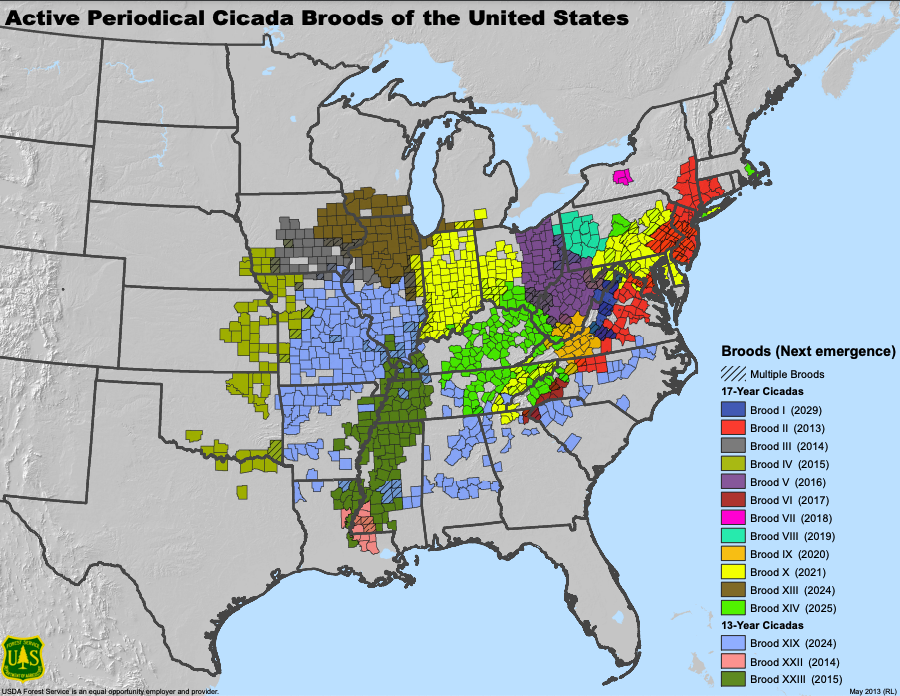New year, new brood: Map shows where cicadas will be in 2025
(NEXSTAR) – If you’re currently living in a cicada-filled wonderland (or nightmare, rather), the good news is they’ll soon be a distant memory. These massive broods of bugs only come out periodically, every 13 or every 17 years (depending on the brood).
This year’s “cicada-geddon” is brought to us by Brood XIX, which emerges every 13 years, and Brood XIII, which is on a 17-year cycle.
A map, created by the U.S. Forest Service, shows Brood XIX’s territory in light blue, concentrated in Missouri and Illinois, but also scattered across the Southeast from Oklahoma to Maryland. Brood XIX is the largest geographic brood in the nation.
Brood XIII, shaded in brown on the map below, is even further inundating Illinois, plus neighboring Iowa and Iowa, in 2024.
States spared by the trillions of cicadas this year might not be so lucky next year. In 2025, Brood XIV is set to come to life. It’s the second-largest periodical brood of cicadas, according to the University of Connecticut.
You can see Brood XIV’s territory shaded in lime green on the map below. It stretches from Southern Ohio through Kentucky and Tennessee. Parts of West Virginia, Virginia and North Carolina are also expected to see the cicadas in 2025.

Because the broods only come out every 13 or 17 years, it’s highly unusual to have a joint emergence like the one we’re seeing in 2024 with broods XIX and XIII. These two broods haven’t emerged at the same time since 1803, said Emily Justus, an entomology expert at Purdue University.
The numbers that are coming out in 2024 – averaging around 1 million per acre over hundreds of millions of acres across 16 states – are mind-boggling. Easily hundreds of trillions, maybe quadrillions, University of Connecticut cicada expert John Cooley said.
Despite their intimidating appearance, cicadas are not dangerous.
“All they do is just climb up on trees and pee. That’s as much damage as they do,” said Saad Bhamla, a professor at Georgia Tech College of Engineering.
In an attempt to make that sound less gross, Bhamla clarified that cicada pee is unlike mammalian pee in that it is largely water. “What’s coming out is just water. So you don’t have to worry, it isn’t like our human pee. It isn’t disgusting, it’s just water.”
If you though 2024 was impressive, an even bigger adjacent joint emergence will be when the two largest broods, XIX and XIV, come out together in 2076, Cooley said: “That is the cicada-palooza.”
The Associated Press contributed to this report.
Copyright 2023 Nexstar Media Inc. All rights reserved. This material may not be published, broadcast, rewritten, or redistributed.

